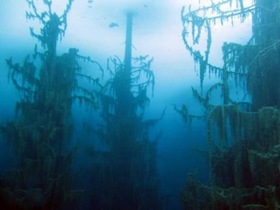Cut with a liquid knife. Water rushes over a rock's sharp edge while millions of gallons of clear mountainwater pond the jagged rocks below. Forcing its way down river, the white water cuts through a gorge that has taken an eon to carve, as the rushing liquid rolls across the land, heading out to sea. The power is evident.
A music so gentle it seduces our thoughts, captivating our senses with the fluid sounds of a pipers snare. A veil of liquid silver caresses the side of a steep boulder, gathering its flow into a pool before making its way down the stream and out of sight. The peace is obvious.
Waterfalls are one of nature's greatest mystiques. Since ancient times there have been tales of the magical powers of waterfalls. All cultures have their myths and legends...









A music so gentle it seduces our thoughts, captivating our senses with the fluid sounds of a pipers snare. A veil of liquid silver caresses the side of a steep boulder, gathering its flow into a pool before making its way down the stream and out of sight. The peace is obvious.
Waterfalls are one of nature's greatest mystiques. Since ancient times there have been tales of the magical powers of waterfalls. All cultures have their myths and legends...































